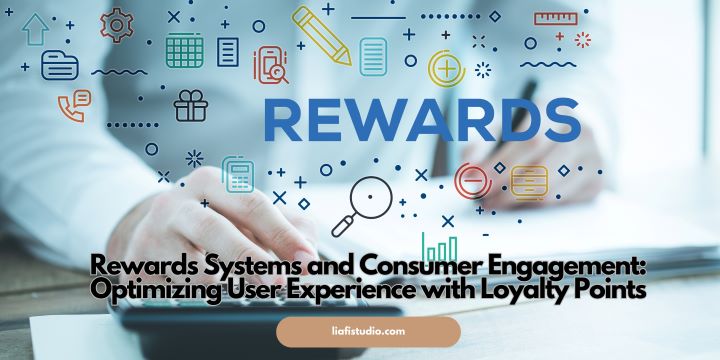Key Takeaways:
- Understand the subtle ways deceptive practices affect consumer decisions.
- Learn about the impact of misinformation on consumer trust.
- Discover strategies consumers can use to spot misleading information.
Table of Contents
- Introduction to Deceptive Practices
- The Psychological Impact on Consumers
- Common Forms of Misinformation
- The Role of Consumer Awareness
- Strategies to Identify Deceptive Practices
- Impacts on Trust and Long-term Consumer Relationships
- Case Studies and Real-Life Examples
- Conclusion and Empowering Consumers
Introduction to Deceptive Practices
In the modern marketplace, the battle for consumer attention is fiercer than ever. Companies employ numerous strategies to attract and retain customers, but not all are straightforward. A shadowy side of marketing emerges when businesses opt for deceptive practices to manipulate consumer perceptions and choices through tactics that are not immediately obvious. These tactics can range from misleading advertisements to more subtle misinformation that alters a consumer’s understanding of a product or service.
Deceptive practices are not merely blatant falsehoods. They can be intricately woven into marketing narratives to create an illusion of truth and authenticity. Hence, a comprehensive understanding of such practices is vital for consumers striving to make informed decisions and navigate the marketplace more effectively.
The Psychological Impact on Consumers
Delving into the psychology of deception reveals that these practices strike at the core of consumer decision-making processes. For those keen to learn more about these deceptive techniques and how they layer into everyday consumer interactions, it is crucial to scrutinize the ubiquitous yet unseen strategies that have permeated a wide array of industries. By exploiting basic human emotions and cognitive biases, deceptive advertising creates a concoction of desires and fears that can mislead consumers into purchasing they might otherwise avoid. Manipulations can result in cognitive dissonance, where a product’s perceived value or urgency skews a consumer’s understanding of reality.
For instance, the “fear of missing out” (FOMO) is a psychological leverage point often used by marketers to create artificial urgency. This tactic illustrates how easily the notion of scarcity can be manipulated to drive immediate consumer action, often to the detriment of patient, deliberative purchasing decisions.
Common Forms of Misinformation
Misleading advertisements represent one of the most visible forms of deceptive practices. They often capitalize on exaggerated claims and eye-catching visuals to skew consumer perception. Studies highlighted by The Psychology of Deception exhibit how deeply rooted these effects can be, often resulting in disillusionment and a cascade of negative emotions once the deception is revealed. A prevalent example includes hyperbolic endorsements or imagery that suggests unrealistic outcomes, creating inflated expectations about a product’s capabilities. Other common forms of misinformation involve the concealment of essential information, such as additional fees or terms that significantly affect consumer experiences. These subtle tactics employ complex strings of half-truths designed to lead consumers into assumptions that favor the seller’s objectives.
Moreover, with the burgeoning influence of digital platforms, companies have turned to user-generated content as a fertile ground for deception. Fake reviews and paid endorsements blur the line between genuine consumer feedback and strategic marketing ploys, further complicating the consumer’s ability to discern truth from fiction.
The Role of Consumer Awareness
In this interconnected, information-laden world, consumer awareness protects against deception. Education empowers consumers to question the authenticity of advertisements and inspect underlying motives. The mantra “buyer beware” is more relevant now than ever, urging consumers to arm themselves with knowledge and skepticism. Understanding product claims, deciphering corporate jargon, and staying abreast of industry standards are vital steps in promoting a culture of informed purchasing.
Elevating consumer awareness challenges companies to emphasize transparency, eventually fostering a marketplace driven by genuine quality and value rather than clever marketing guile.
Strategies to Identify Deceptive Practices
Successfully navigating deceptive practices involves developing a keen eye for doubts and inconsistencies. To thwart deception, consumers can examine advertisements critically, seek out third-party validations, and meticulously compare claims with similar products. Sites like Consumer Reports are pivotal resources that provide unbiased assessments that help sift fact from fiction.
Additionally, evaluating customer reviews on independent platforms can illuminate genuine user experiences and counterbalance the oft-curated narratives presented by sellers. By leveraging these strategies, consumers can dismantle manipulative facades and ensure their purchases align with authentic needs and expectations.
Impacts on Trust and Long-term Consumer Relationships
Trust acts as the bedrock of any fruitful consumer relationship. Once deceptive practices are uncovered, the resulting breach of confidence erodes a consumer’s faith in a brand. It can project wider ramifications across the industry through negative word-of-mouth and public scrutiny. Brands that engage in deception might experience short-term gains but inevitably face long-term repercussions, including damaged reputation, diminished brand loyalty, and financial decline.
Repairing trust requires a concerted effort short on rhetoric and long on genuine actions. This involves rectifying deceptive practices and building a framework of open communication and reliability that reestablishes consumer confidence.
Case Studies and Real-Life Examples
Several high-profile cases illustrate the pervasive nature of deception in marketing. Consider, for instance, the regulatory actions taken against companies utilizing misleading health claims to sell supplements or the fines levied against automakers for embellished emissions data. These cases emphasize the rigorous scrutiny deceptive practices draw once exposed. They also highlight the imperative of ethical marketing and the profound consequences of neglecting consumer trust for short-term gain.
Learning from such real-life examples underscores the importance of vigilance from consumers and regulatory bodies to maintain market integrity and compel businesses towards truthfulness.
Conclusion and Empowering Consumers
While deceptive practices remain a persistent challenge in the market landscape, consumers wield significant power to counteract deception through informed decision-making. By nurturing a culture of awareness and critical analysis, consumers protect themselves and demand greater business accountability. As more consumers advocate for transparency, the marketplace gradually transforms, favoring businesses prioritizing ethical engagement and honesty over manipulation.
In essence, the journey towards consumer empowerment is ongoing. By cultivating awareness, consumers are prepared to transform challenges into opportunities for both individual betterment and collective progress.




